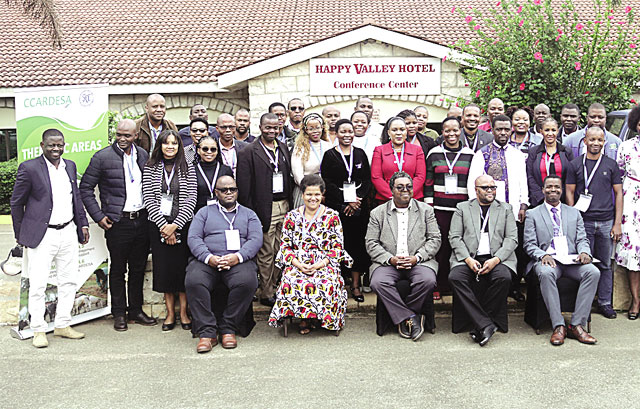By Siphesihle Nkwanyana NERCHA Head of Communications | 2021-01-24

THE ending AIDS Agenda calls for our collective efforts in order to achieve our 2022 target.
The 37-year-journey has been a laborious one for Emaswati as we battled with a pandemic that saw us claim the number one spot in the world for being the smallest country with a high HIV prevalence.
These statistics shocked us too, as we didn’t understand why a small nation like ours could top nations with bigger populations.
I guess in our minds it was; big population equals big infections and therefore small population equals fewer infections.
Well, from a layman’s perspective I guess. Over the past three decades the Kingdom of Eswatini, while still facing challenges regarding the overall HIV prevalence, has achieved considerable milestones in its HIV and AIDS National Response and in reaching epidemic control.
Through a multisectoral stakeholder and forward-looking approach, the country has achieved the 95-95-95 strategic milestone towards sustained control of the epidemic. This was done through a substantial scale-up of testing and treatment, thereby much ground has been covered in terms of reducing new infections. In 2016, UNAIDS led the process of assisting the country develop the HIV Investment Case, which defined the key five programmes that would turn the tide in the HIV response.
These included:
Rollout of Antiretroviral Treatment
Prevention of Mother to Child Transmission
Voluntary Medical Male Circumcision
Prevention targetting adolescent girls and young women and their partners
TB/HIV Co-infection
These are the HIV programmes that the country prioritised and invested in tirelessly.
To this end, the Multisectoral HIV and AIDS Strategic Framework (NSF) 2018-2023, which is a five-year policy and planning document was developed to guide focused resource allocation, programming and implementation of the HIV response in the Kingdom of Eswatini.
The framework also provides the need to introduce target setting approaches and prioritising effective HIV programmes that make an impact in turning the tide of the HIV and AIDS epidemic.
However, there are still other structural drivers of HIV and these have a direct impact on the country’s ability to sustain the hard-earned HIV achievements mentioned earlier.
1. Gender Based Violence has been on the increase in recent times and reached alarming levels during recent years.
Gender Based Violence poses a threat to the HIV response through high risk of HIV transmission. Up to this day, the country is recording alarming numbers of GBV cases, including rape, which is predominantly the highest driver of HIV because it poses a higher risk of unsafe sex.
More so because the victim of violence is not in a position to protect themselves from infection because of forced sex.
2. Teenage pregnancies have similarly escalated in the year.
Teenage pregnancies are also an indication that the youth still engages in risky sexual behaviours, which exposes them to higher risks of HIV transmission.
This presents a need to improve the administration of justice as this is not only a criminal act but also reverses the development goals of the country, as teenagers drop out of school in high numbers, robbing them off their dignity and a decent future.
To address this need, the (NSF) 2018-2023 seeks to focus on providing opportunities to young people in order to reduce their vulnerability to high risk behaviour.
3. Poverty remains a key challenge for the country with an estimated 63 per cent of the population living below the poverty line of about E15.00 a day. Addressing poverty, income inequality and lack of employment opportunities is one of the key strategies to be addressed.
This presents a need to strengthen economic empowerment models for HIV Prevention.
The list is endless but these challenges are heavy for the country to bear, therefore, as partners in the HIV response, our programmes should be structured in such a way that we continually innovate, learn, and adapt best practices to ensure that the 95-95-95 goal is not only retained but remarkable progress is made towards achieving 100-100-100.
The business as usual approach will not end the HIV/AIDS pandemic, therefore the 2030 global target will require even more rigorous efforts to diagnose, treat, and support more Key Population Groups.
And above all, promote equity and instigate programmes that are non-discriminatory and non-stigmatising.
share story
Post Your Comments Below

BEAUTY Pageant Eswatini Chairman, Sandra Ismail, officially passed over the Miss Eswatini title t...

SOCCER - LIVING on borrowed time!
For the first time in history of local football, two of...

While things are falling apart at the Pigg’s Peak Government Hospital, the ministry of heal...

Eswatini along with many other African nations is under scrutiny for failing to meet its commitme...
All material © Swazi Observer. Material may not be published or reproduced in any form without prior written permission.
Design by Real Image Internet